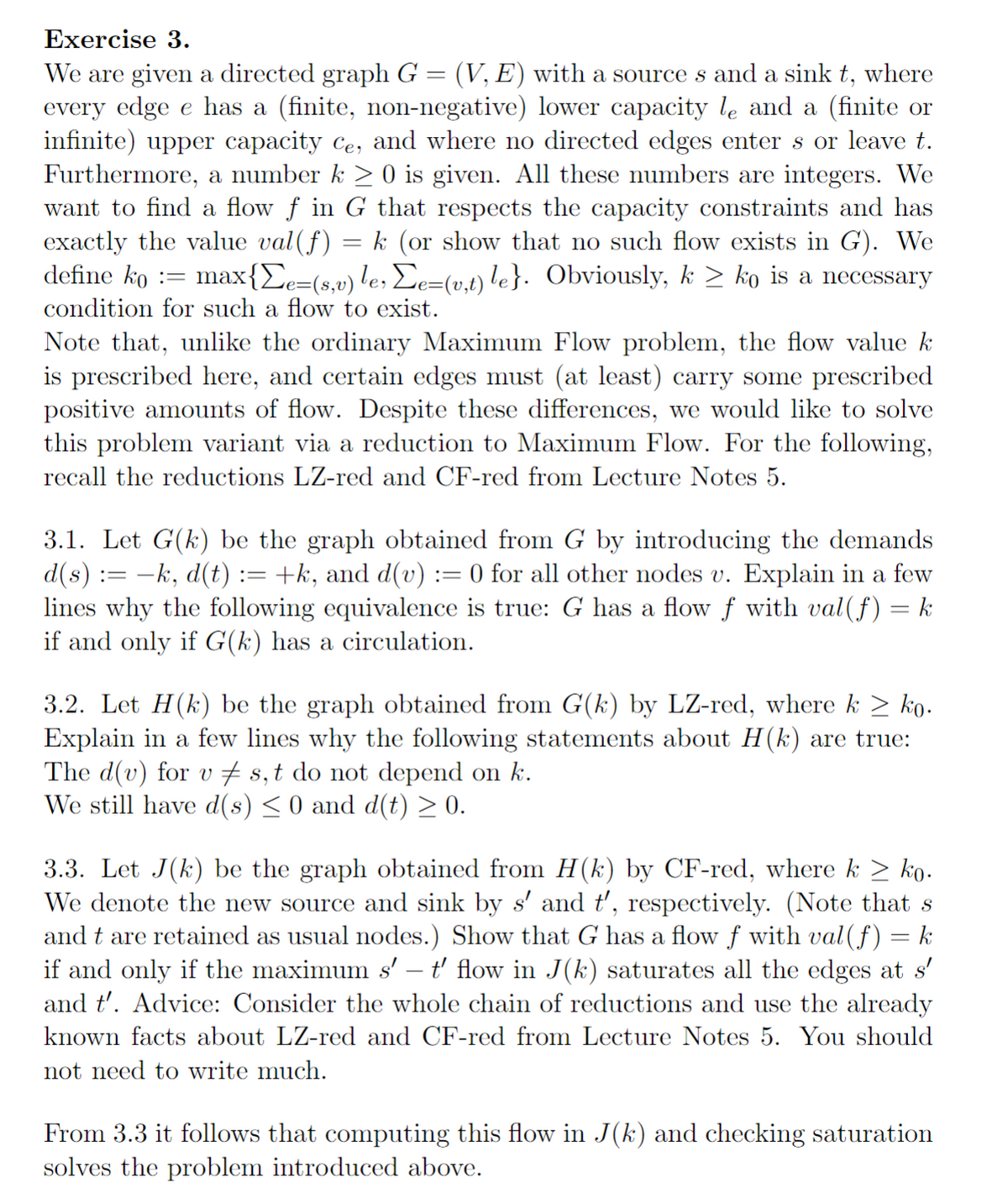answer 3.1 and 3.2
Related questions
Question
would u answer 3.1 and 3.2

Transcribed Image Text:Exercise 3.
We are given a directed graph G = (V, E) with a source s and a sink t, where
every edge e has a (finite, non-negative) lower capacity le and a (finite or
infinite) upper capacity ce, and where no directed edges enters or leave t.
Furthermore, a number k ≥ 0 is given. All these numbers are integers. We
want to find a flow f in G that respects the capacity constraints and has
exactly the value val(f) k (or show that no such flow exists in G). We
define ko = max{Σe=(sv) le, Σe=(v,t) le}. Obviously, k ≥ ko is a necessary
condition for such a flow to exist.
-
Note that, unlike the ordinary Maximum Flow problem, the flow value k
is prescribed here, and certain edges must (at least) carry some prescribed
positive amounts of flow. Despite these differences, we would like to solve
this problem variant via a reduction to Maximum Flow. For the following,
recall the reductions LZ-red and CF-red from Lecture Notes 5.
3.1. Let G(k) be the graph obtained from G by introducing the demands
d(s) := −k, d(t) := +k, and d(v) = 0 for all other nodes v. Explain in a few
lines why the following equivalence is true: G has a flow f with val(f) = k
if and only if G(k) has a circulation.
3.2. Let H(k) be the graph obtained from G(k) by LZ-red, where k ≥ ko.
Explain in a few lines why the following statements about H(k) are true:
The d(v) for v‡s, t do not depend on k.
We still have d(s) ≤ 0 and d(t) ≥ 0.
3.3. Let J(k) be the graph obtained from H(k) by CF-red, where k ≥ ko.
We denote the new source and sink by s' and t', respectively. (Note that s
and t are retained as usual nodes.) Show that G has a flow f with val (f) k
if and only if the maximum s’ – t' flow in J(k) saturates all the edges at s'
and t'. Advice: Consider the whole chain of reductions and use the already
known facts about LZ-red and CF-red from Lecture Notes 5. You should
not need to write much.
From 3.3 it follows that computing this flow in J(k) and checking saturation
solves the problem introduced above.
Expert Solution
This question has been solved!
Explore an expertly crafted, step-by-step solution for a thorough understanding of key concepts.
Step by step
Solved in 3 steps
